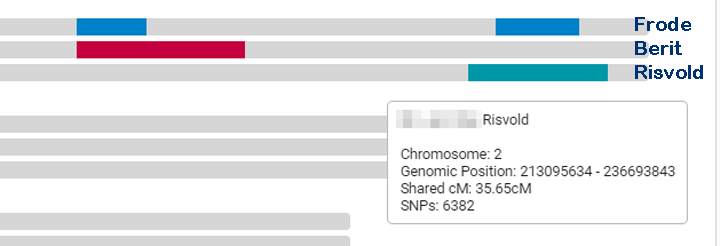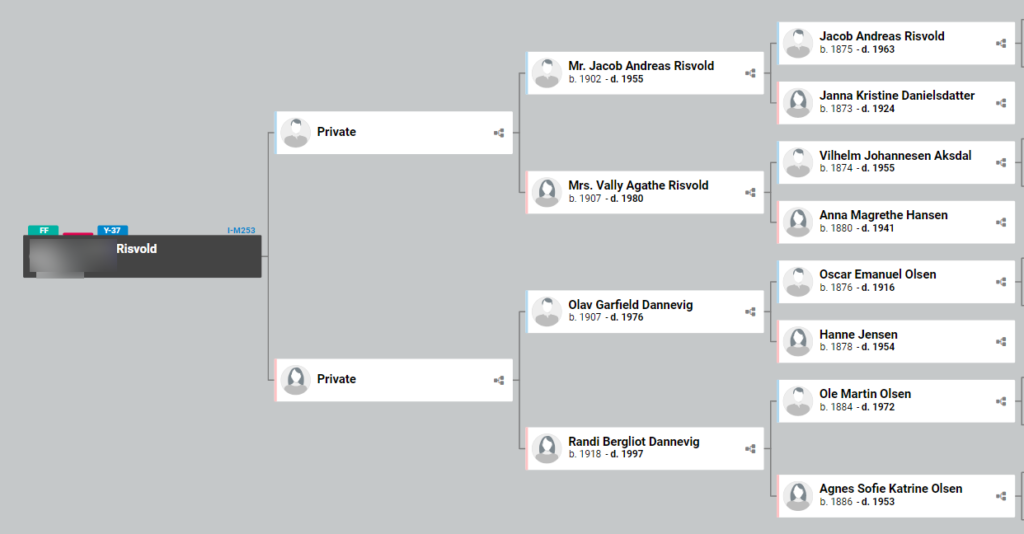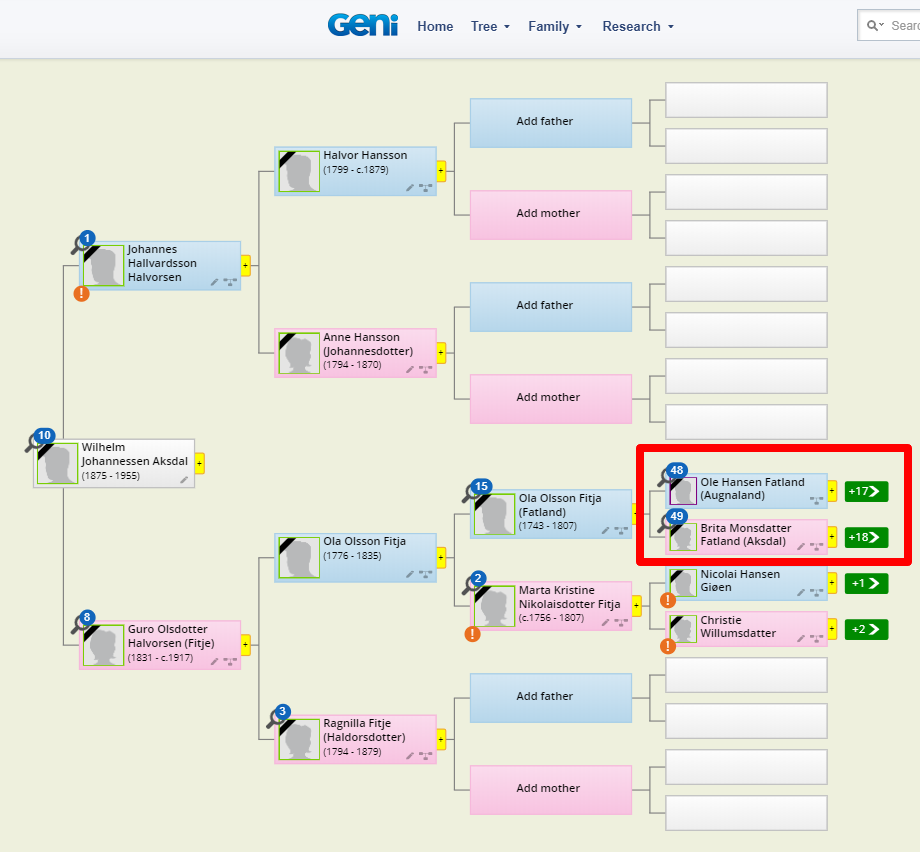Ancestry has spoiled us all with its tree and ancestor matching tools; so much so that I almost never look at the actual segment data any more. Ancestry does not provide that anyway. When autosomal DNA testing first came out, you had to look at the segments on each chromosome that you shared with your matches in order to figure out relationships. Personally, I kept a master spreadsheet of DNA segment data for all my Dad’s matches from the different sites (click here for the post on how to do that or here for all the posts on that topic).
The raw DNA data from Ancestry can be uploaded to a number of other sites in order to do chromosome comparisons and see the segment information: GEDmatch, Family Tree DNA ( ftDNA), and MyHeritage. You can see if you have good matches on those other sites without paying, but to unlock them on the latter two sites will cost a small amount. GEDmatch is free but it has extra tools that are available for a nominal charge and of course it can be used by law enforcement if you have opted in. Please do so and watch Cece Moore on the TV show the Genetic Detective to see why!
How is the segment data useful? It helps when you have many segments assigned to specific ancestors because of who they are matching with. Then when a new DNA relative appears you can figure out which line they are related on based on their shared segments with you and your relatives. Many people prefer to use the chromosome painting capability at DNApainter rather than spreadsheets to keep track of segments. I have been keeping my Dad’s sheet since 2011 so it’s just easier for me to add new relatives there.
I recently noticed that Dad had a 33.5 cM single segment match (I do not include the many segments less 7cM) on Family Tree DNA to a Norwegian named Jan Olav Risvold (who gave me permission to use his full name). Normally I ignore single segments, but this one was large and fell in a section of chromosome 2 which is well mapped for my Dad, so I took a look. Also Vold (Wold) is a family name, so perhaps?
One problem with segment data is that you cannot tell which side it is from without other relatives to compare to. Luckily for us, my brother and I have often inherited different segments at the same location from our Norwegian-American Dad. Therefore by comparing them to other cousins we can tell whether they are from his mom or his dad. Jan matches my brother on that segment but not me. Thanks to a 6th cousin, Frode, who shares 22cM at the same location with my brother and dad (see image at the top of this article), we had previously identified the ancestral couple that this DNA came to us from, our Fatland 5th grandparents, Ole (1696-1772) and Brita. on Halsnøy Island in Hordaland. They are our ancestors via Dad’s maternal grandad Henry H. Lee from Skjold farm in Etne, Hordaland.
Now to look at the Risvold pedigree tree at ftDNA and see if he has that couple. No luck as there are not many ancestors from the 1600s listed. One problem with Norwegian genealogy is that surnames were patronymic so there are lots of Olsens, Larsons, and Hansens that are not related to each other. Thankfully, wherever possible, most Norwegian genealogists use the farm name as a surname in their trees. The farm name was actually an address and changed when you moved (click here for more on Norwegian naming)
Typically you have to click the name in a tree like this to get a pop up box and see if they were from a locality that your ancestors were also from. Amazingly, in this case, one unusual surname jumped out at me right away, Aksdal, which is the name of a farm in Etne that once belonged to my Fatland ancestors! Since I own the Etne-soga (local history of all the Etne farms), I was able to look up Wilhelm Aksdal (“w” is pronouced as “v” in Norwegian) and start building his tree from the information in those books. Our Risvold cousin had very little more about him, other than his parents names.
GENI.com is my go to site for building Norwegian trees since there are already so many Scandinavians there. Sometimes I get lucky and the person is already in the tree but in this case I had to add Wilhelm and his parents and their parents while looking through my books for that Fatland connection. Finally I found it at Fitja farm in Etne where the youngest son of my 5th grandparents had settled. Above is the image of the GENI pedigree that I sent to my new cousin.
Here is how GENI shows my relationship to Wilhelm:

As you can see, Jan is my 6th cousin. Now dear Skjold and Lee cousins, please go to family tree DNA and search for Jan Olav Risvold in your match lists and let me know if you match him too!




Geni is the best! That plus MyHeritage’s Theory of Family Relativity tool are my key resources for solving DNA puzzles.
I have 3 DNA matches each of which individually matches me on a specific part of one of my chromosomes. Let’s call these three people A, B, and C. The part that is surprising and confusing to me is that the following 3 things are true:
(1) A does not triangulate with myself and B at this location,
(2) A does not triangulate with myself and C at this location, and
(3) B does not triangulate with myself and C at this location.
How can this be? I think that I should have at least one triangulation group! I believe that at this genomic location, I inherited DNA from my mom and from my dad. The implications of the above 3 statements are:
(1) The segment that matches with A was inherited from my mom or my dad while the segment that matches with B was inherited from the opposite parent.
(2) The segment that matches with C was inherited from the opposite parent as the parent from which I inherited the segment that matches with A. Thus, the segment that matches with C was inherited from the *same* parent as the segment that matches with B.
(3) The segment that matches with C was inherited from the *opposite* parent as the segment that matches with B.
Thus, we have a contradiction!
Justin –
Likely at least one or more of those segments is a false match where they are matching with bits and pieces from each parent. How large are these segments? See this post for more about false matches
https://blog.kittycooper.com/2014/10/when-is-a-dna-segment-match-a-real-match-ibd-or-ibs-or-ibc/